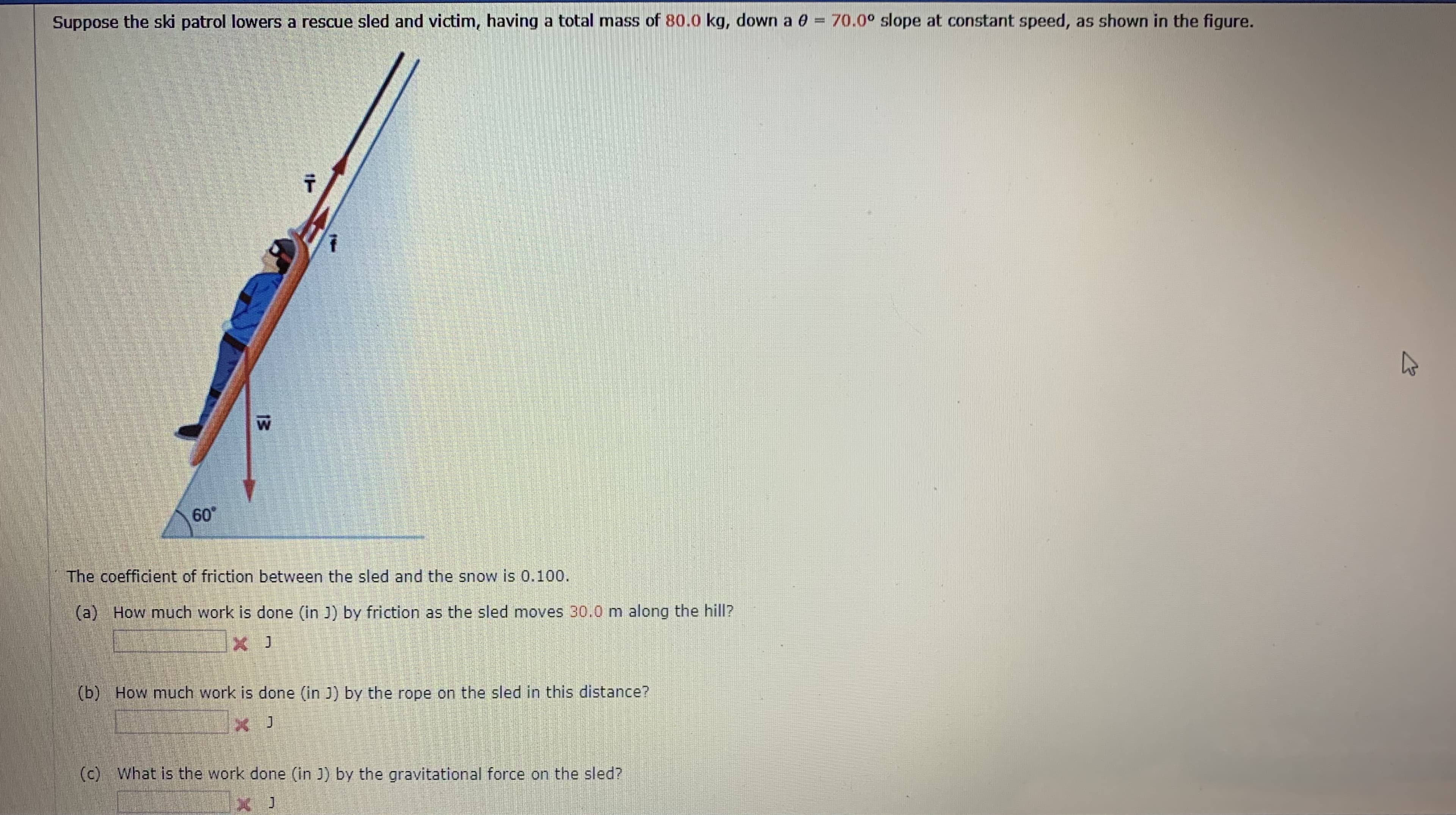Suppose the ski patrol lowers a rescue sled and victim, having a total mass of 80.0 kg, down a 0 70.0° slope at constant speed, as shown in the figure. 60 The coefficient of friction between the sled and the snow is 0.100. How much work is done (in J) by friction as the sled moves 30.0 m along the hill? (a) (b) How much work is done (in J) by the rope on the sled in this distance? (c) What is the work done (in J) by the gravitational force on the sled? 13
Suppose the ski patrol lowers a rescue sled and victim, having a total mass of 80.0 kg, down a 0 70.0° slope at constant speed, as shown in the figure. 60 The coefficient of friction between the sled and the snow is 0.100. How much work is done (in J) by friction as the sled moves 30.0 m along the hill? (a) (b) How much work is done (in J) by the rope on the sled in this distance? (c) What is the work done (in J) by the gravitational force on the sled? 13
Related questions
Question

Transcribed Image Text:Suppose the ski patrol lowers a rescue sled and victim, having a total mass of 80.0 kg, down a 0 70.0° slope at constant speed, as shown in the figure.
60
The coefficient of friction between the sled and the snow is 0.100.
How much work is done (in J) by friction as the sled moves 30.0 m along the hill?
(a)
(b) How much work is done (in J) by the rope on the sled in this distance?
(c) What is the work done (in J) by the gravitational force on the sled?
13
Expert Solution
This question has been solved!
Explore an expertly crafted, step-by-step solution for a thorough understanding of key concepts.
This is a popular solution!
Trending now
This is a popular solution!
Step by step
Solved in 8 steps with 8 images
